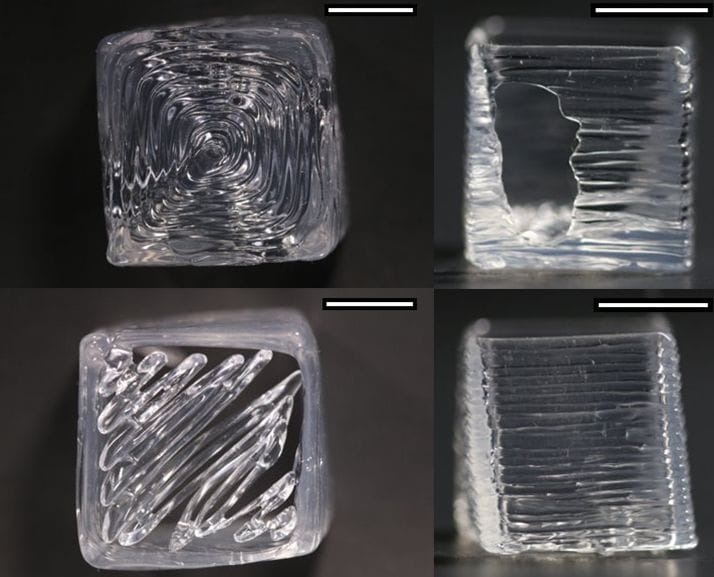
New research may show a path towards completely automated tuning for 3D printing.
I recall the first 3D printer I ever operated, which was the famous MakerBot Cupcake in 2009. I recall the huge anticipation I had when launching my very first 3D print, after spending many hours putting together all the wires, connectors, boards, laser cut sheets and gears.
It was a disaster.
My first print was merely a blob that did not in any way resemble the intended geometry – which was a simple cube.
My problem was that I had the print parameters wrong. In those days you had to specify many parameters, and there was literally zero experience to base your guesses upon. And that’s what it was – guesses.
Even worse, changing one parameter affected the importance of others. It was a difficult and tedious process to weed through a myriad of parameter configurations to finally arrive at configuration where the print somewhat resembled the desired cube.
The process was even more confusing because by reading forums to gain advice from others was for nought. You see, because each person assembled the machine individually, there were slight differences in the physical performance of each machine. This made using someone else’s highly recommended print parameters not always successful. You were literally on your own.
That’s changed a great deal, as 3D printer manufacturers of today spend considerable time in the lab performing this tedious process to develop very refined print profiles for many different and specific materials, which they usually distribute to customers to ensure they are happy with successful prints.
But it’s still a lot of work. You just don’t see it.
However, that may change with some research from CMU, where researchers developed a kind of expert system for working through the multiple parameters involved in a 3D print job. One of the researchers, Sara Abdollahi, said:
If an experimental material has 20 print parameters with five levels, the experimenter can have trillions of combinations of print settings to explore.
Yes, that’s how I felt when exploring my first 3D printer.
Their Expert Guided Optimization (EGO) model uses a “hill climbing” algorithm to gradually hone in on the best print parameters through repeated attempts, much like a human might do. A human must provide an initial guess at the parameters, but the rest is driven by EGO. It is automated and results in possibly the best combination of parameters.
Their work focused on a particular type of 3D printing process that’s typically used for 3D bioprinting in gels, but I see no reason why this approach could not be used for virtually any other 3D printing situation using any given 3D print process.
All of them involve specific materials and a variety of print parameters, and all require tedious experimentation to discover the optimum set of parameter values.
I don’t expect this technique to be used by 3D printer operators, but instead I see this most frequently adopted by 3D printer manufacturers and 3D print material providers who can spend the time to find the best print profiles for their equipment and materials for their clients.
That is, after this research is eventually commercialized.
Via CMU

